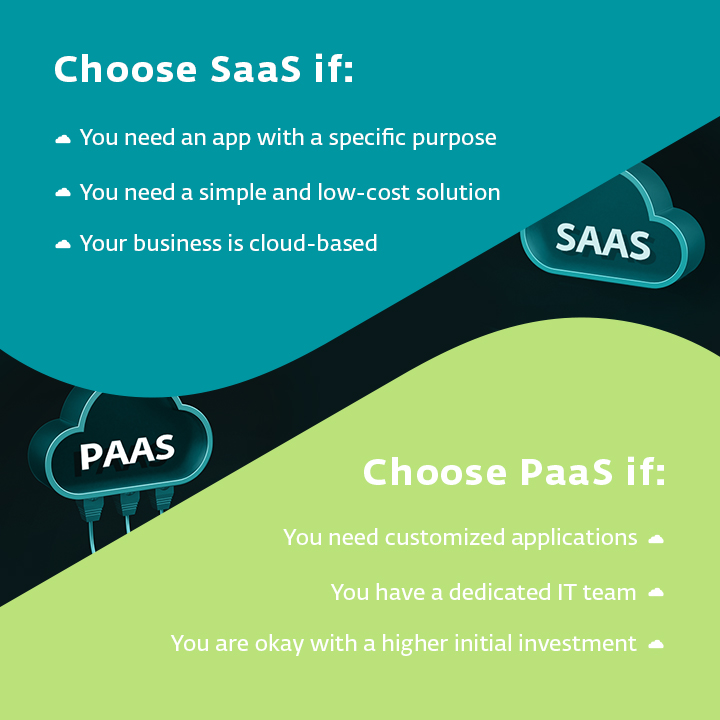As a business owner, you may have heard of PaaS and SaaS as the two most popular cloud solutions. While both offer a variety of benefits, they are not created equally. Understanding the differences between PaaS and SaaS can help you decide which solution is best for your business.
What is PaaS?
PaaS, which stands for "Platform as a Service," is a cloud solution that provides developers with a platform to build and deploy business applications. PaaS simplifies the development process, allowing developers to create, test, and use their tools more efficiently while managing the underlying infrastructure. This solution can significantly benefit businesses by enabling their employees to create custom applications without demanding more internal or external developers. However, PaaS can be too complex to set up and manage, and it requires a higher level of technical expertise. Improper handling of PaaS can also pose higher security risks, such as data breaches, unauthorized access, hijacking of accounts, misconfigurations of cloud security settings, and DDoS attacks.
Typical examples of PaaS are the Google App Engine and Microsoft Azure, which allow developers to host and manage their apps in cloud data centers.
Benefits and strengths
One of the most significant benefits of PaaS is flexibility. It allows businesses to build custom applications without hiring an external team of developers, enables employees to create solutions without having specific hardware on-site, and simplifies the development pipeline by only requiring the configuration of desired services.
Challenges and risks
PaaS solutions require businesses to manage their extensive infrastructure, increasing the risk of cyber threats. In short, more options mean more aspects that need attention and protection. Companies must ensure that their IT teams have the technical expertise and resources to manage PaaS securely.
What is SaaS?
SaaS stands for "Software as a Service." It is a cloud solution that provides software applications to users over the internet, usually focusing on one specific purpose, such as communication, data sharing, or time management. SaaS mostly eliminates the need for businesses to install and maintain software applications on their own servers. Instead, they are hosted by the provider and accessed through the internet. This cloud solution is typically more affordable and more straightforward than PaaS.
Some examples of well-known SaaS applications are Microsoft 365, which offers several work tools; Slack, which provides communication functionality; and Dropbox, which focuses on file sharing.
Benefits and strengths
SaaS is strongest in its simplicity. It does not require businesses to manage infrastructure or worry about software updates. SaaS is also typically more affordable than PaaS, as it is usually offered on a subscription basis. It is simply a tool focused on doing one specific thing.
Challenges and risks
This simplicity may also pose security risks if the provider does not adequately manage the software applications' security. Businesses must ensure that their SaaS providers have robust security measures in place, such as encryption, multifactor authentication, and regular software updates.
Moreover, SaaS may not offer the same level of customization as PaaS. Businesses may be limited in their ability to customize software applications to their specific needs. Additionally, companies may be at the mercy of the SaaS provider for software updates and maintenance, which may result in unexpected downtime.

Questions to ask to make the right decision
Choosing between PaaS and SaaS depends on your business's specific needs and requirements. Many companies also choose a combination of them. Here are questions you should ask yourself to help determine the right option for you:
● Do I have an internal team of developers, or will I leave this to a supplier?
● Do I have dedicated cybersecurity experts in my company?
● How much will it cost me to develop something internally, compared to the price of SaaS? What is my budget?
● Do I need my apps to be highly customized, or is there a ready-to-use solution (SaaS) that fits my needs?
● Will my team be able to update and maintain the application developed internally in the long term?
● Are apps built for specific goals enough to run and manage my business?
● How soon do I need the solution?


